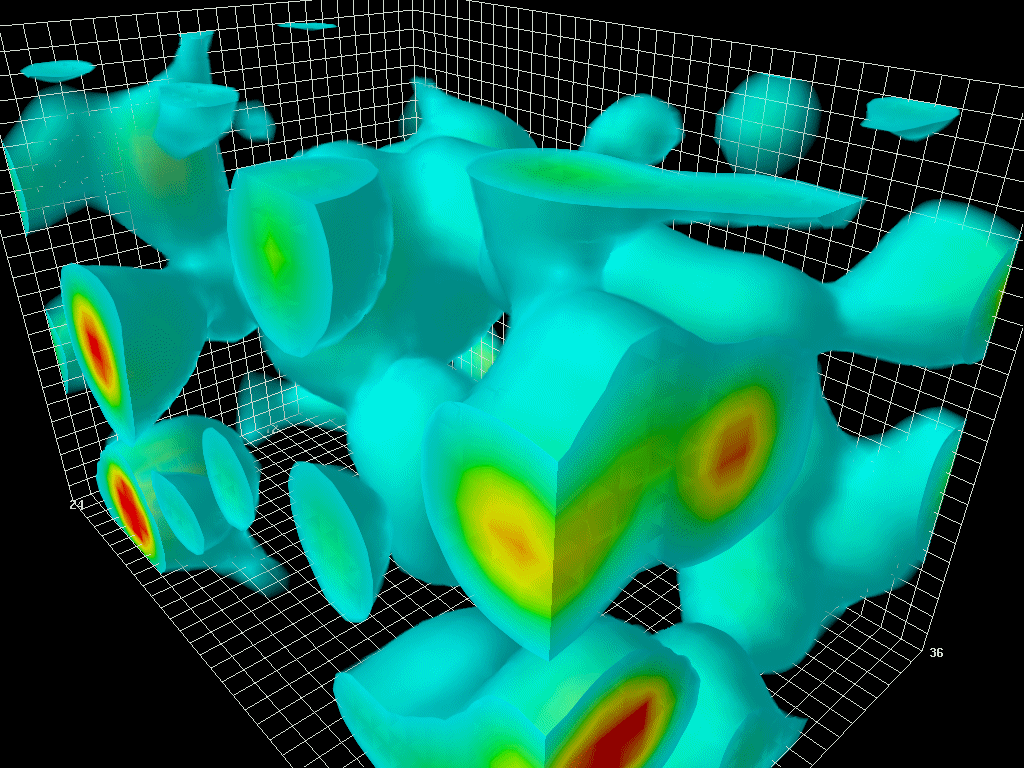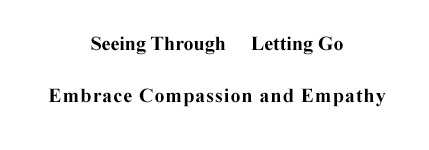(Update Pending)
In this post, we discuss non-luminosity, the second realm of reality in Buddha’s three-body cosmos, and why it is equivalent to the quantum field in quantum mechanics, except with the addition of consciousness.
Let’s start by discussing the origin of the term “non-luminosity.”
We start with Buddha’s definition of enlightenment. According to The Princeton Dictionary of Buddhism, in Aṣṭasāhasrikā Prajñāpāramitā Sūtra (Chinese=道行般若波羅蜜經,) Buddha teaches that “the thought of enlightenment is no thought since in its essential original nature is transparently luminous (Chinese=光明).”
According to The Princeton Dictionary of Buddhism, in the Aṅguttara Nikāya (Chinese=增一阿含經), Buddha stated, “The mind, O monks, is luminous, but defiled by adventitious defilements.”
In other words, the enlightened and luminous nature of Citta is defiled. So, how can Citta change, and what does defilement mean?
As discussed earlier, “In the Sandhinirmocana Sūtra, Buddha teaches that all cosmic phenomena fall into one of two categories. One type of phenomenon exists unconditionally, while the other is conditional.” Since Citta (Chinese=本覺心) is an unconditioned phenomenon, the only way Citta can change is to become conditioned. Given that its quiescence is why Citta is unconditioned, it follows that mentality must fluctuate to become conditioned. In other words, defilement is a state of mental fluctuations.
However, a fluctuating mentality is not a “not thought” mentality and, therefore, does not fit Buddha’s definition of enlightenment anymore. Consequently, the fluctuating mentality is no longer enlightened or luminous. Thus, the fluctuating mentality can be called unenlightened (Chinese=不覺心) or non-luminous (Romanized Sanskrit=tamasa; Chinese=無明). In fact, both terms are used. While unenlightened generally refers to the mental state of conscious beings, non-luminosity typically signifies the realm of fluctuating mentality permeating the universe. An example is that non-luminosity is used as the first link in Buddha’s doctrine known as the Twelvefold Chain of Dependent Origination.
So, what is adventitious? Adventitious means that Citta and non-luminosity are “associated with something by chance rather than as an integral part; extrinsic.“
- In Buddhism, when things are associated by chance, it means there is no causal relationship between them. In other words, in addition to each being “not causal,” as Buddha teaches in “Such is the Way of Dharma,” there is no causal relationship between Citta and non-luminosity either. Both realms exist naturally, neither caused by outside conditions nor by each other.
- Extrinsic means that Citta and non-luminosity are separate; one is not “an integral part” of the other. This is understandable. After all, the quiescent and unconditioned Citta cannot coexist in the same domain with the fluctuating and conditioned non-luminosity.
With the origin of the name clarified, let’s discuss the properties of non-luminosity.
A) Quantum
For non-luminosity to be equivalent to the quantum realm in quantum mechanics, it must fit the scientific meaning of “quantum.”
A quantum, by definition, “is a discrete quantity of energy proportional in magnitude to the frequency of the radiation it represents.” It was discovered by Dr. Max Planck in 1900, for which Dr. Planck won his Noble Prize in Physics in 1918. Examples of quantized phenomena include photons and electrons.
However, photons and electrons are energy themselves. Therefore, “a discrete quantity of energy of a photon or electron” is nothing more than “a discrete quantity of energy” of the “energy.” While it makes sense in the context of scientific investigation, it does not relate to what is quantized in nature.
Indeed, with “everything being energy” in science, this is an example of how science, using inferentially connected knowledge to understand the universe, is more about exploring the relationships between different forms of energy, but not “what the world really is, as Dr. Kuhn said, “everything is related to something else,” it provides “no foundation between what I believe and what the world really is. So, how do I know anything?”
However, humans understand that their thoughts come one after another in “discrete quantities.” However, in Buddha’s sentient cosmos, conscious thoughts begin not in humans but with the conscious epiphenomena in non-luminosity.
Buddha’s epiphenomena is known as the “Neighbor-to-Emptiness dust.” (Chinese=鄰虛塵).” As discussed when discussing the “Neighbor-to-Emptiness dust,” “Neighbor-to-Emptiness dus” and quarks are equivalent because the speeds of their annihilations are similar. While quarks that are annihilated at the speed of “one million billion billion frames per second,” in Śūraṅgama Sūtra (Chinese=大佛頂首楞嚴經), Buddha teaches that the “Neighbor-to-Emptiness dusts” are annihilated at the speed of “born here, annihilates same here, (Chinese=當處出生 隨處滅盡).”
Therefore, the conscious thoughts of “Neighbor-to-Emptiness dust” can be quantized into minute amounts, similar to quarks, photons, and electrons. While Human thoughts are much slower, there is no question that their conscious thoughts also come in “discrete quantities.”
B) Empty Space is not Empty
Dr. David Tong describes “empty space is not empty” in his video lecture, Quantum Fields: The Real Building Blocks of the Universe. He said, “Take a box, and take every single thing that exists out that box, take all the particles out the box, all the atoms out the box: what you are left with is a pure vacuum, and this is what the vacuum looks like.”
Then, he showed this computer simulation.

http://www.physics.adelaide.edu.au/theory/staff/leinweber/VisualQCD/Nobel/ActionAPE5LQanimXs30.gif.
Dr. Tong continued, “So, what you are looking at here is a computer simulation using our best theory of physics, which is called the Standard Model. It’s a computer simulation of absolutely nothing. This is an empty space, literally an empty space with nothing in it. This is the simplest thing you could possibly imagine in the universe. What you are looking at here is that even when the particles are taken out, the field still exists. ……..Even when there is nothing else there, the field is constantly bubbling and fluctuating in a very complicated way. These things are what we call quantum vacuum fluctuations. This is what nothingness looks like from the perspective of our current theories.”
Therefore, “Empty space is not empty” because it is full of quantum vacuum fluctuations. Furthermore, “empty space is not empty” is “the simplest thing you could possibly imagine in the universe” because a space without fluctuations does not exist in it.
However, if the simplest thing in the quantum mechanical universe is full of quantum fluctuations, then the simplest thing in Buddha’s universe is full of mental fluctuations. Buddha’s three-body structure separates the realms with and without fluctuations. While Citta of the Ultimate Reality does not fluctuate, the mentality of non-luminosity fluctuates non-stop since its beginning from immemorial. Therefore, “empty space is not empty” is also the simplest thing in Buddha’s universe because a space without fluctuations does not exist in it either.
C) One Field Everywhere For All Times
In discussing “How is the Cosmos Constructed?” the host of Closer to Truth, Dr. Robert Kuhn, inquired Dr. Frank Wickek, a 2004 Nobel Laureate physicist, why “with all these particles, what 10 to the eightieth protons or whatever, why are they all the same?” Dr. Wiczek responded, “That says something very profound about how the universe is constructed.” “The most basic objects out of which to construct the universe are not particles but objects we call quantum fields.” “There is something called electron field that actually appears in our equations that creates electrons. Since there is only one such field, and it has the same property everywhere for all times, all the electrons it makes have the same property.”
In other words, according to the quantum field theory, the field that constructs the universe is everywhere, for all time, and the only one in the universe. Indeed, these are also the attributes of non-luminosity. Like the electron field in quantum mechanics, non-luminosity is the only field in Buddhism, and it has the same property everywhere for all times. Like the electron field, everything non-luminosity makes has the same property, which is consciousness.
D) Non-luminosity Without Beginning
According to this article, “non-luminosity without beginning” (Chinese=無始無明) originates in the Śrīmālādevī Siṃhanāda Sūtra (Chinese=勝鬘師子吼一乘大方便方廣經, English=Lion’s Roar of Queen Śrīmālā), “one of the main early Mahāyāna Buddhist texts belonging to the Tathāgatagarbha sūtras that teaches the doctrines of Buddha-nature and “One Vehicle” through the words of the Indian queen Śrīmālā.”
In this one-minute clip, Dharma Master Jing Kong discussed the Buddha’s answer when asked the same question, recorded in Śūraṅgama Sūtra (Chinese=大佛頂首楞嚴經), which “is a Mahāyāna sūtra that has been especially influential in Chan Buddhism.”
The question that Purna (Chinese=富樓那), a disciple of Buddha and the “foremost in expounding the Dharma,” asked the Buddha was, “Where does non-luminosity without a beginning come from (Chinese=無始無明是怎麼來的?)” Buddha replied, “There is no reason; it comes from nowhere and goes nowhere (Chinese=它沒有原因,它沒有來處,也沒有去處).”
“There is no reason” confirms the Buddha’s teaching in “Such is the Way of Dharma” that non-luminosity, like Citta, exists as a “noncausal” phenomenon. Like Citta, non-luminosity has existed naturally without a beginning since immemorial.
E) The universe is a quantum mechanical wave function.
In this episode of “What Exists?”, the host of Closer to Truth, Dr. Robert Kuhn, asked Dr. Sean Carroll, “What are the most fundamental categories that we can classify reality in its total sense?” Dr. Carroll responded, “My best guess is that the universe is a quantum mechanical wave function, and that is all that exists.”
Indeed, if Buddha were asked the same question, his answer would be, “The universe is a non-luminosity wave function, and that is all that exists.” The only difference would be that non-luminosity, as a realm of fluctuating mentality, is conscious. Therefore, while everything the quantum mechanical wave function builds is a”quantitative property,” everything that non-luminosity builds is conscious.
As discussed, Buddhism and science are complementary. Replacing quantum energy with mentality in the equation that creates electrons would allow the same equation to create a conscious world without affecting how quantum physicists use the equation. However, it would incorporate consciousness into the quantum field and enable it to create a conscious world in which not only can human babies be born with consciousness but also give consciousness to plants such as mimosas folding, unicellular organisms such as amoeba engulfing paramecia, and paramecia’s attempt to escape, minerals like memory in water, animals like lion’s emotional reunion with a human who raised him, etc., all of which are missing in the world of quantum energy.
The following post will discuss how the mentality gives rise to the universe, as taught by the Buddha in Mohe Zhiguan.
(If you like this post, please like it on our Facebook page and share. Thank you.)


